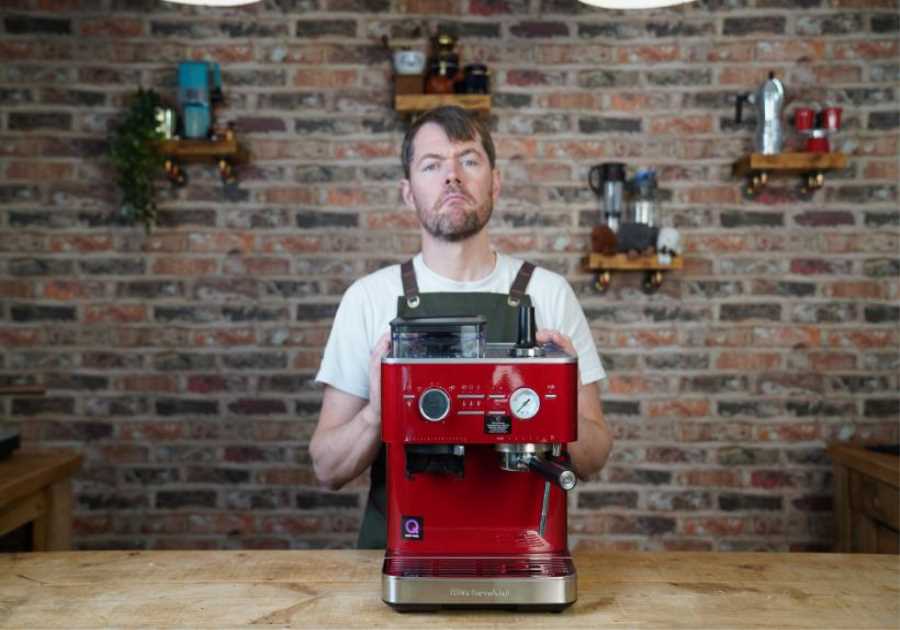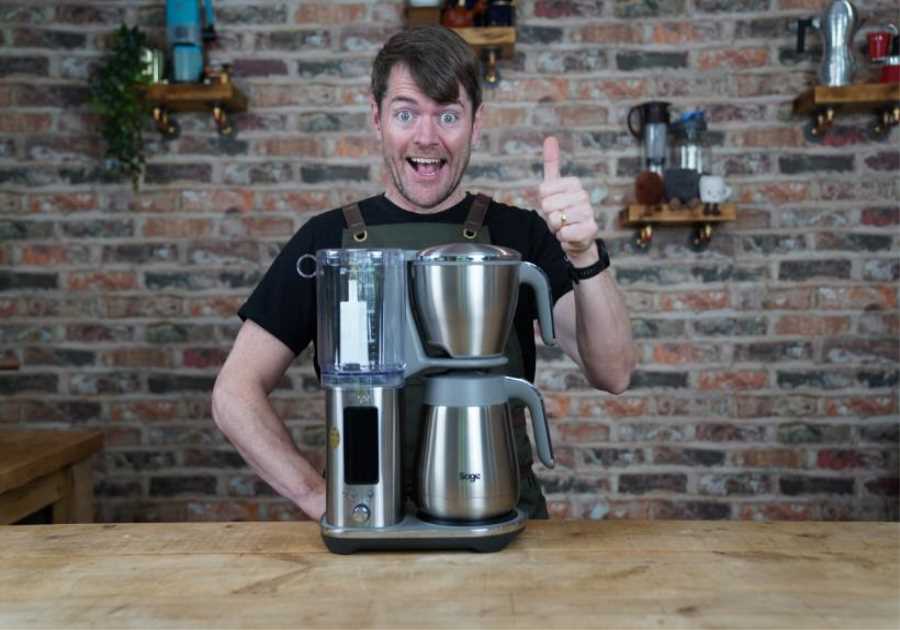For some 140 years now, espresso machines have been making their mark on the coffee industry. Machine technology and design have advanced immeasurably – with efficiency and ergonomics increasingly at the forefront.
Today, it’s essential that manufacturers incorporate some of the most cutting-edge and intuitive features in their machines to help enhance extraction, as well as both the barista and customer experiences.
Additionally, with sustainability more in mind than ever before, investing in advanced machines can help coffee shops reduce waste and energy consumption – and in turn potentially cut down on costs.
To learn more about how espresso machine technology has evolved, and how coffee shops can reap the full range of benefits, I spoke to Maurizio Tursini, Chief Marketing and Solutions Officer at Cimbali Group.
You may also like our article on how the espresso machine has influenced barista workflow.
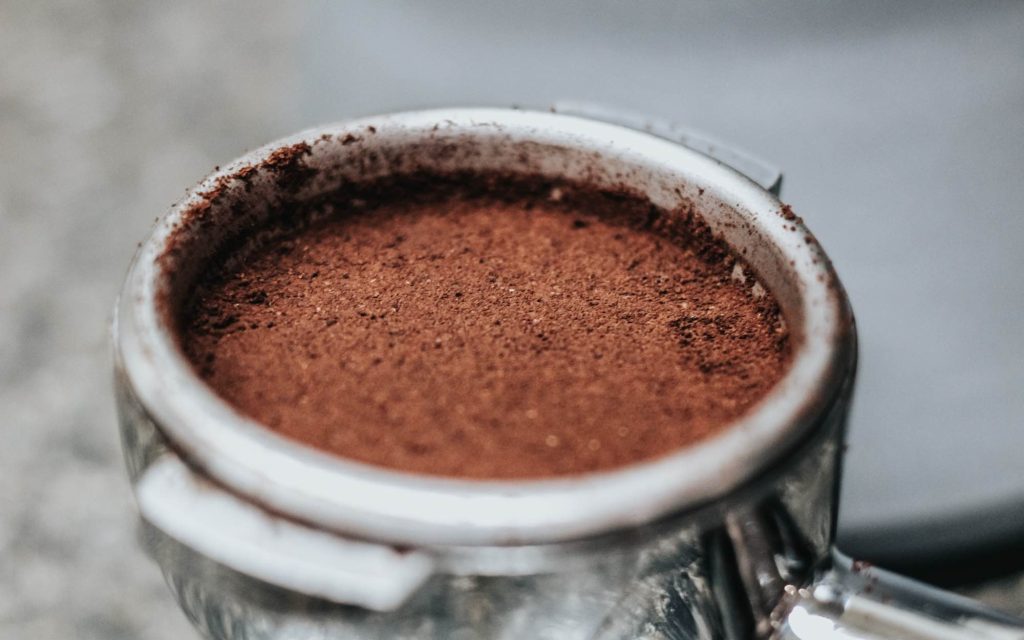
How has espresso machine technology changed over the years?
From innovative boiler systems to state-of-the-art flow rate technology to increasing automation, espresso machines have evolved in many ways, especially over the last few decades.
Now more than ever, manufacturers are incorporating more advanced features that emphasise precision, accuracy, and consistency – with many considering this a new era of “smart espresso machines”.
These typically include integrated automated features which help to improve extraction and minimise the need for baristas to constantly adjust different brewing variables themselves. Similarly, users also have the option to customise an ever-growing range of factors, including:
- Pressure
- Temperature
- Flow rate
Ultimately, this means baristas can adjust extraction settings to get the best out of each coffee they use – whether it’s a blend or a single origin.
But beyond designing machines to simply improve coffee quality, manufacturers have also been prioritising ergonomics and sustainability.
Technologically-advanced machines tend to include more user-friendly features that help to streamline workflow. In turn, baristas can prepare drinks more efficiently to a consistently high standard, while still providing excellent customer service.
“Sustainability has taken centre stage in espresso machine design and materials because of a growing awareness about environmental issues and the need for eco-friendly practices,” Maurizio tells me. “Sustainable materials and features, such as energy-efficient components, often mean coffee businesses can reduce costs in the long term.
“At Cimbali Group, we also emphasise sustainability by incorporating recycled materials into our machines, and ensuring most of their parts are recyclable,” he adds. “We strive to align our machine designs with our environmental commitments.”
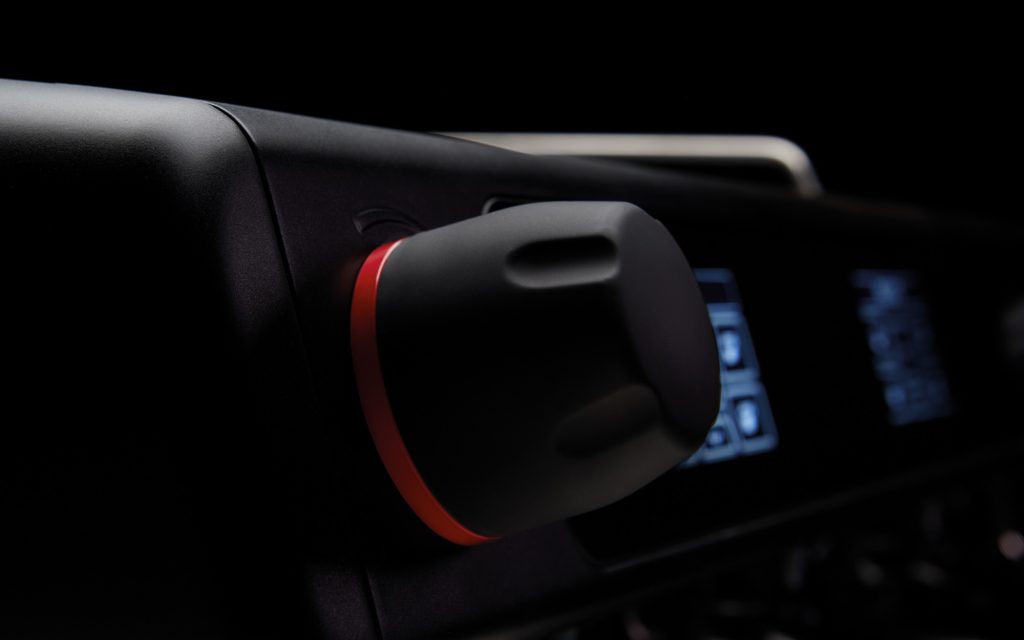
Exploring cutting-edge technology
Today, many machines now boast a number of exciting new innovations. One of the most prominent is integrated Internet of Things (IoT) technologies, which can record and analyse extraction data. And in addition to this, there are a growing range of features which can precisely control different brewing variables.
For instance, LaCimbali’s new M40 espresso machine – which was recently launched at HostMilano 2023 – includes a thermal system to regulate temperature more accurately and consistently. This allows baristas to accentuate the unique characteristics of various coffees and ensure they are pulling high-quality shots.
Maurizio explains how it works: “Water is stored in a pre-heating boiler, where its temperature is consistently controlled before it’s then dispensed to the groupheads.”
The system also functions by heating only the groupheads which are in use – helping to reduce water waste and conserve energy consumption.
Another important aspect is preparing milk. With more and more manufacturers moving away from traditional steam wands, more sophisticated and automated milk foaming solutions are taking centre stage. The M40’s Turbosteam Milk 4 Cold Touch feature, as one example, offers precise temperature and foam control – as well as up to four different preset recipes and foam levels for both cow’s and plant milks.
Apps and connectivity
Features like touch screens have become the norm for almost any espresso machine – as well as dedicated apps which baristas can use to communicate with their machines more effectively.
What’s more, these new technologies even allow users to connect machines with other pieces of equipment for more intuitive function. For example, the M40’s Perfect Grinding System, which connects the machine to a grinder via Bluetooth, constantly monitors grinder and dosing settings. In turn, baristas don’t have to make as many manual adjustments.
“The M40’s Barista Drive System ensures that the grinder you use, such as the LaCimbali G50, accurately identifies the required dose for both single and double shots,” Maurizio says. “The dose is then dispensed, and the system communicates this information to the machine.”
With built-in telemetry systems connected to wifi, users also have access to real-time data which they can track and analyse to monitor machine function and performance – or even communicate any problems or errors to technicians.
Maurizio tells me the LaCimbali Global Remote Service Program allows machine technicians to address issues remotely to minimise any disruptions to workflow and service. He adds that the M40 can also be continuously connected to the LaCimbali Project app, which means baristas can change settings while they’re away from the machine.
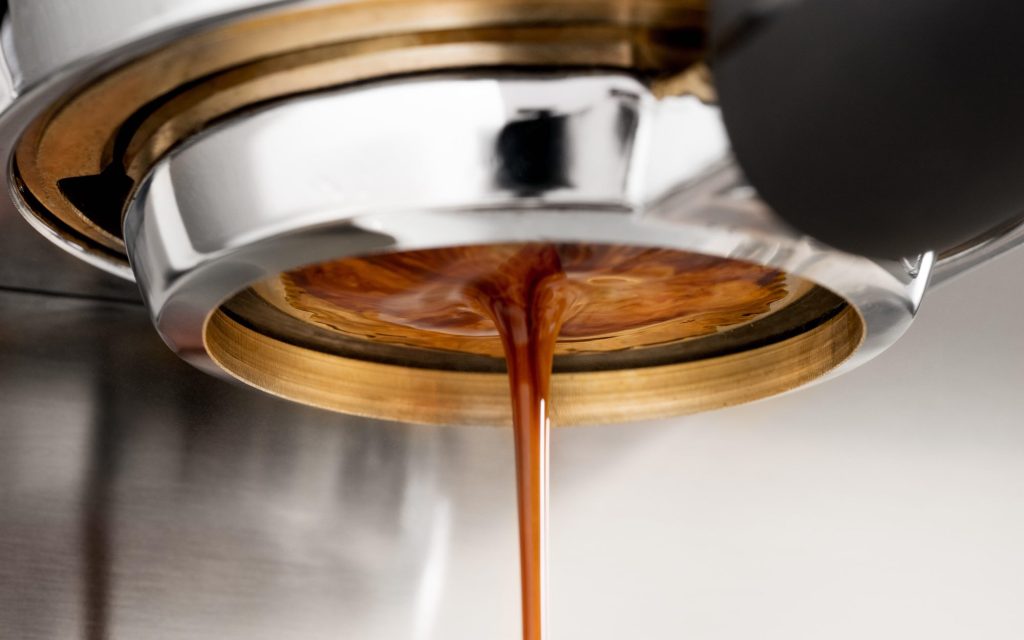
Getting the most out of these new technologies
Given how espresso machine technology has become so advanced, coffee shop owners and baristas need to know how to harness the full potential of their equipment. Ultimately, more intuitive machine technology and design can help to improve both extraction and customer experience.
It’s ultimately the manufacturer’s responsibility, however, to ensure that baristas of many different skill levels can use their espresso machines. Maurizio explains that LaCimbali’s M40’s Perfect Grinding System allows coffee professionals to optimise extraction by fine-tuning grind and dose settings based on the target flavour profile.
Furthermore, the Barista Drive System provides users with the option to pre-set brewing parameters like yield, temperature, and extraction time. “This reduces the need for manual adjustments and minimises the risk of human error, ensuring consistent and high-quality espresso shots with each use,” he says.
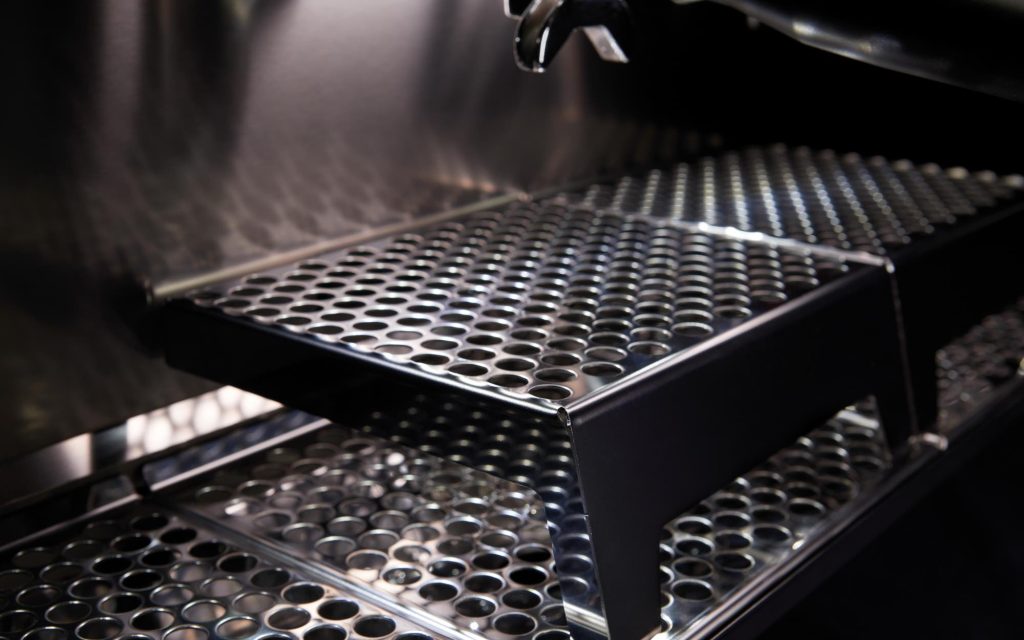
Automation is playing an increasingly key role in espresso machine technology. And while we can sometimes talk about automation with a certain level of scepticism in specialty coffee, it’s vital that coffee shop owners and baristas use it to their advantage.
In short, automated espresso machine technology makes it easier to multitask, and can also simplify training for less experienced baristas.
“Automated features improve consistency and quality, ensuring customer satisfaction without compromising efficiency,” Maurizio says.
Moreover, modern espresso machine design prioritises functional details to optimise workflow, ergonomics, and overall performance for both coffee professionals and customers. For example, the M40’s groupheads are located further away from the milk foaming systems for more streamlined interaction.

Prioritising sustainability
The benefits of advanced espresso machine technology also extend beyond extraction. Leveraging new and improved machine features means coffee shops can reduce waste, lower operating costs, and decrease energy consumption.
It’s inevitable that coffee shops and roasters produce some waste, but minimising these levels is key. One of the many sources when it comes to preparing beverages is coffee and milk waste.
Inaccurate dosing and grind settings during dial ins means baristas have to dispose of more ground coffee – which can quickly eat into costs.
“Minimising grind retention means less waste and less cross-contamination of old, stale ground coffee, too,” Maurizio says. “This is not only more sustainable, but also more cost-effective.”
Steaming or foaming too much milk is also another issue, which is why coffee shops are becoming increasingly reliant on automated solutions. For instance, the LaCimbali M40’s Automatic Dose Milk System dispenses a predetermined amount of milk from an external or under-counter refrigerator into a pitcher, while the Turbosteam system can then foam the milk according to a preset recipe.
The importance of energy efficiency
With rising energy costs around the world, coupled with increasing concern about carbon emissions, more efficient espresso machine technology can help shops reduce both.
“We are aiming to meet the growing demand for sustainable and energy-efficient espresso machines,” Maurizio explains. “This not only benefits coffee shops and roasters by reducing operational costs, but it also aligns with our commitment to implementing more environmentally-responsible practices.”
As part of this, he adds that the M40’s eco-thermal system can reduce energy consumption by up to 66%, and is also made from 44% recycled materials and is over 94% recyclable.
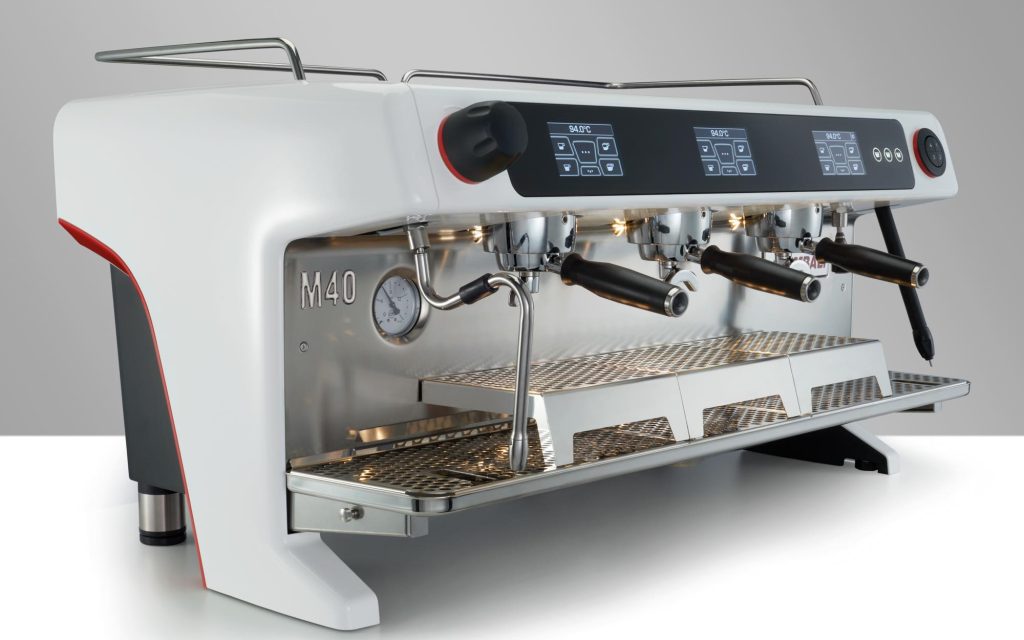
As espresso machine technology continues to develop, we should expect to continue seeing new solutions that prioritise consistency and quality, all while keeping sustainability in mind.
Although the technologies may start to look different over the ensuing decades, this continuous evolution will undoubtedly remain driven by the goal of delivering the best possible coffee experience every time.
Enjoyed this? Then read our article on how the home espresso machine market is evolving.
Photo credits: Cimbali Group
Perfect Daily Grind
Please note: Cimbali Group is a sponsor of Perfect Daily Grind.
Want to read more articles like this? Sign up for our newsletter!
The post Espresso machine technology is becoming more advanced – how can coffee shops use it to their advantage? appeared first on Perfect Daily Grind.
By: Zoe Stanley-ForemanTitle: Espresso machine technology is becoming more advanced – how can coffee shops use it to their advantage?
Sourced From: perfectdailygrind.com/2023/12/advanced-espresso-machine-technology-coffee-shops/
Published Date: Tue, 12 Dec 2023 06:17:00 +0000


